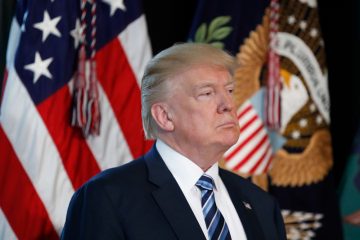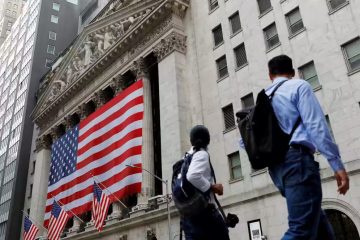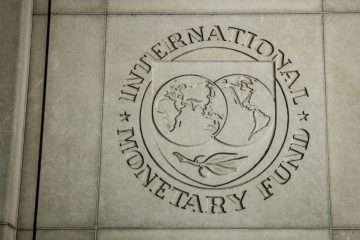America’s recovery breeds complacency about macroeconomic risks
FIVE years after the darkest days of the financial crisis, Lawrence Summers took the dais at an IMF forum to offer a few thoughts on America’s recovery. It was lousy. Growth showed no signs of making up ground lost during a deep recession. The unemployment rate had only just fallen back below 7%. It was common to attribute this lousiness to the after-effects of a monumentally nasty downturn. But Mr Summers suggested that his listeners consider another possibility: that America was stuck in a pattern of slumps punctuated by bubbles, and had been since well before the banking system seized up in August 2007. It is fashionable now, a decade after Lehman Brothers collapsed, to say that the “secular stagnation” hypothesis Mr Summers put forward is no longer relevant. America’s economy grew at an annual pace of 4.2% in the most recent quarter, and unemployment is at 3.9%. But there is little reason to think the world has escaped from the macroeconomic pattern that made the crisis possible.
Mr Summers began by pointing out that the weak recovery was not the only macroeconomic oddity that needed explaining. It seems obvious that before the crisis America had been indulging in a wild bout of economic excess (hence the crash). But there were few signs of excess where economists might normally have looked for them. Neither inflation nor wage growth were signalling that the economy had run up against its productive capacity. Indeed, much the same could be said about the late 1990s before the dotcom bust. Despite an explosive investment and stock boom, there was no sign of the sort of overheating that had driven inflation into double figures in the 1970s and 1980s. America seemed to have entered a novel realm in which even wild booms did not generate excess demand; indeed, one in which growth in demand was chronically weak in the absence of wild booms.
Slumps happen when spending is too low to prevent some of an economy’s capacity from falling idle. Spending drops when the desire to save increases suddenly across an economy, as people seek to pinch pennies in the face of economic anxiety. Because one person’s spending is another’s income, a rise in saving leads to a slump, unless it is offset by increased borrowing elsewhere. But normally, when an economy has too much saving, interest rates fall (or are manipulated downward by central banks) until borrowers come out of the woodwork and savers become less interested in hoarding their income. Real trouble starts when interest rates get stuck at zero before saving and borrowing are brought into balance, leaving the economy stuck. This could be the result of a severe financial crisis, as in America in the 1930s or Japan in the early 1990s. But Mr Summers, borrowing from the ideas of former Keynesians, suggested that such conditions could become a near-permanent feature of the economy.
That could happen for several reasons. Perhaps ageing populations and a slowdown in technological progress were permanently depressing investment. Perhaps inequality, by concentrating resources in the hands of the rich, who are more likely than others to save, was to blame. Whatever the cause, the upshot was a world in which the real rate of interest necessary to keep capacity from falling idle had dropped below zero. In such a situation governments have three options: to accept a permanent slump, to hope low rates spark an asset-price boom that temporarily rouses the economy, or to borrow to soak up the excess saving. It could be, Mr Summers has mused, that the economy needs fiscal stimulus all the time, rather than only in times of depression.
But is such secular stagnation a real phenomenon? Not only has growth picked up, but, perhaps more important, interest rates in America have risen above zero. Surely, if the Federal Reserve can raise its benchmark rate to 1.75% without derailing the economy, something in the secular-stagnation story is awry.
Or perhaps not. The consolidation of America’s recovery roughly coincides with the end of post-crisis deleveraging, and the resumption of growth in total indebtedness as a share of GDP (see chart). Whether intentionally or not, America’s government has embraced permanent fiscal stimulus. Faster growth in 2018 is occurring alongside a widening of the federal-budget deficit, from 3.5% of GDP to 4%. And in his most recent speech Jerome Powell, the chairman of the Federal Reserve, expressed frustration at the economy’s failure to behave as it should. “Inflation may no longer be the first or best indicator of a tight labour market and rising pressures on resource utilisation,” he said. According to him, the Fed should look instead to financial markets for signs of excess.
Living on borrowed time
It is possible, as Mr Powell suggests, that too much money chasing too few workers and goods may no longer bid up the prices of those workers and goods, but instead lead people to bid up the prices of homes and stocks. A better explanation may be that prices for workers and goods are subdued because the economy is not actually at capacity, and that, but for rising asset prices and indebtedness, growth would still be weak. Yes, unemployment is low, but labour-force participation by prime-age adults remains below the pre-crisis level, and wage growth is weak.
If the problem really is a long-run imbalance between desired rates of saving and borrowing, current policy is a mess. For now, financial excess is the means by which spending power flows to those who are eager to use it. Choking it off by raising interest rates further will simply bring back the slump. Government deficits could provide a sustainable long-term solution, if money were directed to growth-boosting public goods, such as infrastructure, and to poorer people. It is they who are most likely to spend additional income and therefore to add to demand. They would also benefit most from additional spending. But politicians struggle to reshape public spending along such lines.
The strange position in which the economy found itself before the crisis, and which complicated the recovery, continues. One of the oddest legacies of the crisis is that governments accept this, and the risks it entails, rather than try for something better.
This article appeared in the Finance and economics section of the print edition under the headline “A savings account”







